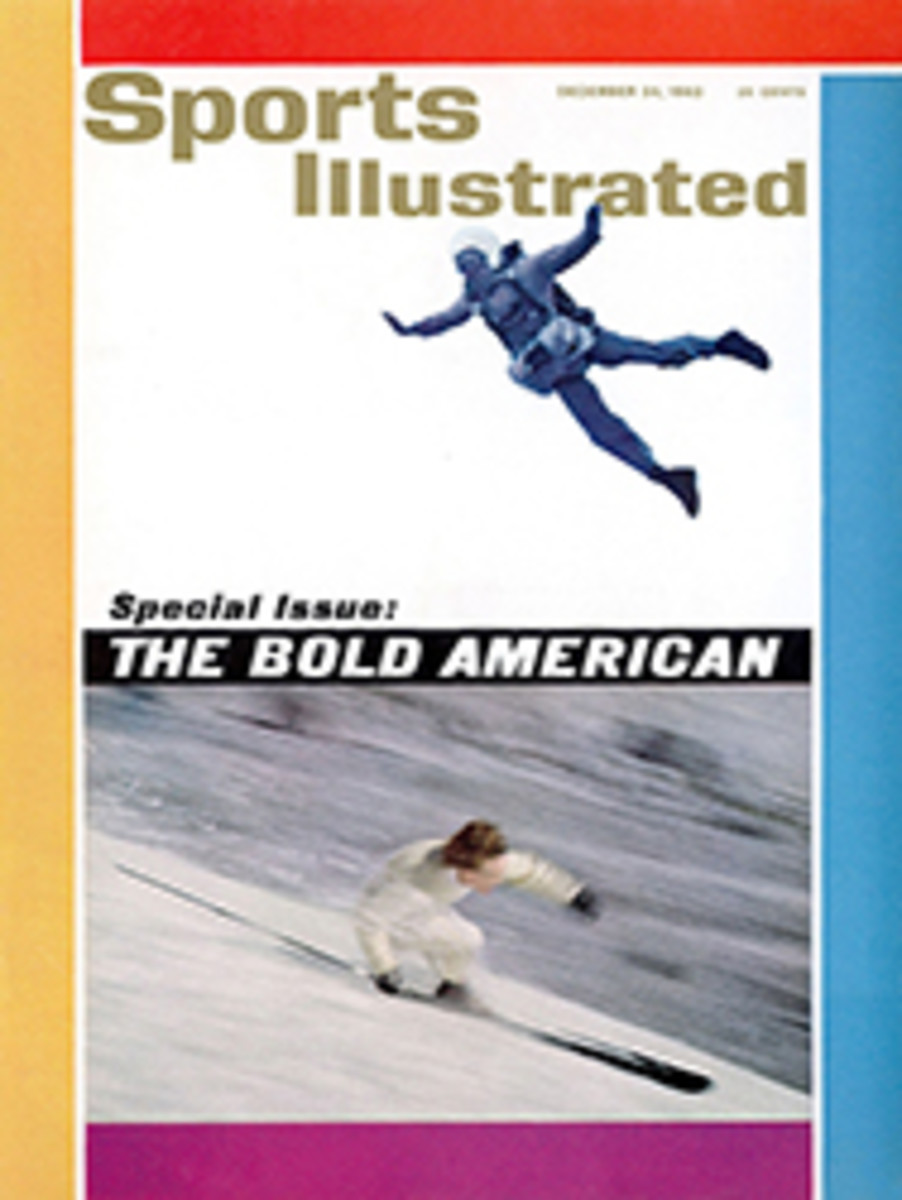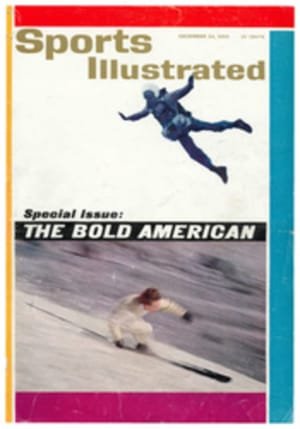
A Bunch of Farmers Upset Football Tradition
when Alabama was picked to play in the 1926 Rose Bowl game against the mighty University of Washington football team, it was considered by many to be the worst mismatch in the history of the game. Alabama had a good enough record—nine straight wins—but football experts in the '20s all knew that southern football was barely on a level with junior varsity play in the rest of the country.
As it turned out, Alabama won—in the most thrilling Rose Bowl game ever played—and no one ever again sneered at southern football. Southern teams played in 13 of the next 20 Rose Bowl games, and today teams from the South dominate the big business of bowl games across the nation.
Dartmouth, the undefeated national champion, had been the first choice of the Rose Bowl committee for the 1926 game. But the Dartmouth players rejected the bid because they felt it was too long a trip to the Coast. Two weeks earlier Les Henry, the Rose Bowl committee chairman, had received a telegram, ostensibly from Alabama Governor W. W. Brandon, stating that, "If you are interested in a real opponent for your West Coast football team, then give Alabama serious consideration." Champ Pickens, the student manager of Alabama's 1896 team, had actually sent the telegram with the governor's blessing. "Alabama," read Henry's reply to the governor's mansion, "will be given the utmost consideration."
When the official invitation arrived in early December, Coach Wallace Wade called a meeting of his Alabama team. "I put it up to the players," said Wade recently. "Going to the Coast was a big thing. It would take us five days on a train from Tuscaloosa. I told them it would deprive them of their Christmas vacation and that they would have to stay in training another three weeks. It took them about two minutes to make up their minds."
The slender Wade, who played guard for Brown in the 1916 Rose Bowl game, had come to Tuscaloosa as head coach in 1923. "It takes a good man to keep going when he's tired," he said as he greeted his players that fall. "That's the kind of man I'm looking for." One such man was Johnny Mack Brown. Brought up in the cotton fields of Dothan, Ala., Brown was later to appear in some 200 motion pictures. "I was a scatback and a pass catcher," he recalls now, "and I weighed about 164 pounds, but I played every minute of every game for three years. When we went out for football at Alabama, we were expected to practice all afternoon. Wallace Wade always told us, 'A good football player never gets hurt.' "
However, Wade's concern over the threat of injury to one of his players, Quarterback Allison (Pooley) Hubert, resulted in cautious strategy for the Rose Bowl game. Hubert, a powerful runner in Wade's single-wing offense, also called the plays. On the Santa Fe Special carrying the 22-man squad to California, Wade said to Hubert, "I don't want you to run much in the first half. Let's see how that Washington line shapes up. You know what happened to Nevers when he played against Washington." (Ernie Nevers of Stanford had been carried off the field on a stretcher after a few collisions with Washington's burly line.)
The tough Washington team had roared through its 11-game schedule (10-0-1), scoring 461 points to its opponents' 39. In their Rose Bowl drills at Seattle the Washington players acted as if the bowl game was nothing more than a light workout, despite warnings from Coach Enoch Bagshaw. By contrast, the Alabama players scrimmaged hard in the Rose Bowl itself the week before the game. Still, they couldn't convince anyone they had a chance. "They've got speed," commented Glenn (Pop) Warner, the famous Stanford coach, "but they're too light to stop that big Washington team."
Wildcat runs wild
Warner's prediction held true in the first half of the game. Washington scored on a one-yard plunge by Right Halfback Harold Patton after All-America Left Halfback George (Wildcat) Wilson had intercepted a pass to set up a 63-yard drive. Quarterback George Guttormsen's drop-kick for the extra point was no good. Minutes later Wilson broke away on a 36-yard run. Johnny Mack Brown, the last defender, stopped him on the 22. "Wilson had a habit of side-stepping and hitting you with his hip that made him tough to tackle," says Brown. ""He was a great player; some people say he was the Coast's best halfback ever." On the next play Wilson threw a touchdown pass. Guttormsen's drop-kick hit the crossbar and bounced back on the field but Washington's 12-0 lead made the l-to-2 odds look good.
At half time the Alabama team sprawled on crimson blankets spread at one end of the field. Wade, moving among his players, made two tactical changes. He ordered Hubert to run with the ball more often. And he shifted Guards Ben Enis and Bruce Jones to end on defense. "We needed more strength outside," said Wade, "to keep Wilson from going wide."
Early in the second half, with Wilson on the bench to rest bruised ribs, Washington punted out of bounds on its 42-yard line. Hubert, taking Coach Wade at his word, carried the ball five plays in a row for a touchdown: to the 31, to the 5 and almost yard by yard in the final three plunges. Bill Buckler converted with a place-kick. Again Washington, unable to move, punted to the Alabama 37. With the Washington defenses set to stop Hubert, Johnny Mack Brown ran to the right, sped downfield, slanted to the midd'e and caught a pass from Left Halfback Grant Gillis for a 59-yard touchdown play. Buckler again converted and suddenly Alabama had a 14-12 lead.
Moments later Washington fumbled and Enis recovered the ball on the Washington 30-yard line. Brown, whom Pop Warner called "one of the fastest football players I've ever seen," ran the identical pattern and this time Hubert hit him with a touchdown pass.
In less than seven minutes Alabama had scored three touchdowns and, although Wilson returned in the final quarter to throw another touchdown pass for Washington, the "bunch of farmers from Alabama," as Johnny Mack Brown describes his team, "had won the Rose Bowl for the whole South" in a 20-19 upset.
The crowd that New Year's Day in 1926 was an estimated 45,000, about half of the attendance in recent years. "That 45,000 was close to capacity then," says Brown, "because the Rose Bowl wasn't really a bowl; it was more of a horseshoe. One end wasn't closed. Alabama closed it for them."
PHOTO
FUTURE MOVIE STAR Johnny Mack Brown caught two passes for touchdowns.

